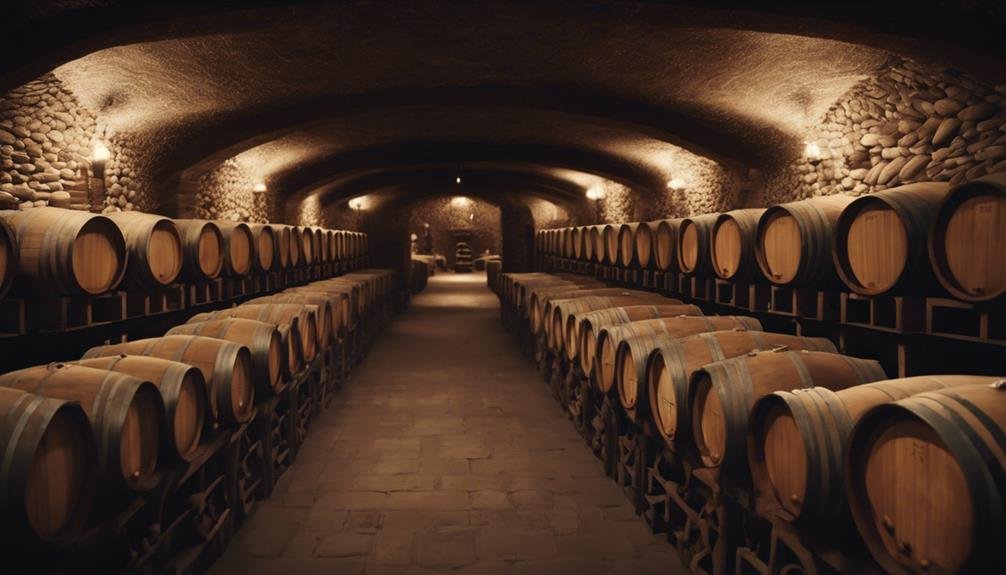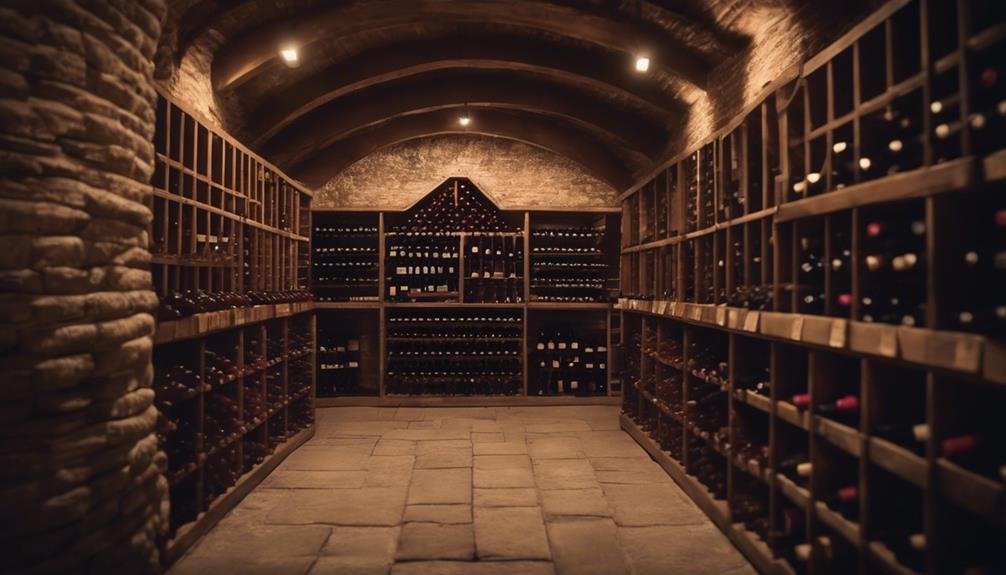Vintage wines are intricately linked to the art of grape years. Weather plays a significant role, impacting grape quality through spring frosts, droughts, and rainy harvests. Factors like soil composition and vineyard location also shape each vintage's unique flavors. Different vintages vary in grape maturity, flavors, and aging potential due to weather conditions during growth. Selecting wines by vintage involves considering grape maturity, weather, soil quality, and winemaking techniques. Affordable wines from good vintages offer surprising quality and value. Unraveling the complexities of vintage wines uncovers a world where nature and human craftsmanship converge to produce exquisite flavors.
Impact of Weather on Grape Quality
Weather plays a vital role in determining the quality of grapes, ultimately influencing the outcome of a wine vintage. Different weather patterns can impact grape characteristics greatly. For instance, spring frosts and hail can harm crops, while summer wet weather can lead to fungal diseases affecting grape health. Drought and excessive heat may pause grape growth, affecting their development.
Additionally, fall rain during harvest can dilute grape flavors and reduce quality. Each grape variety thrives in specific climates, making weather conditions essential for grape cultivation. Understanding how weather influences grape characteristics is important for winemakers to produce high-quality wines each vintage.
Factors Influencing Vintage Variability
What key factors contribute to the variability observed in wine vintages?
Soil composition and vineyard location play a significant role in shaping the character of a vintage. The type of soil in which the grapevines are planted can influence the grapes' quality and flavor profile.
Additionally, vineyard location, including aspects like altitude and proximity to bodies of water, can impact the microclimate dynamics experienced by the grapes.
Moreover, the choice of grape varietals planted in a vineyard is important, as different grape varieties have varying responses to environmental conditions. Understanding and managing microclimate dynamics within a vineyard can help winemakers navigate the challenges posed by weather fluctuations, ultimately influencing the unique characteristics of each vintage.
Significance of Vintage in Wine Production

The significance of vintage in wine production lies in its ability to encapsulate the unique characteristics of a specific grape harvest year, influencing the taste and quality of the final product.
- Grape maturity: Different vintages affect grape maturity, leading to variations in flavor profiles.
- Taste quality: Each vintage imparts distinct flavors and aromas to the wine, shaping its overall quality.
- Weather impact: Weather conditions during the growing season directly influence grape development and, consequently, the wine's characteristics.
- Cellaring potential: Certain vintages are deemed exceptional for aging, enhancing the wine's complexity and value over time.
Strategies for Selecting Wines by Vintage
Selecting wines based on their vintage requires a keen understanding of how grape harvest years influence the taste and quality of the final product. Vintage selection plays a critical role in determining the characteristics and potential of a wine.
The level of grape maturity at harvest directly impacts the flavor profile and aging potential of the wine. Factors such as weather conditions, soil quality, and winemaking practices during a specific year can greatly influence the overall quality of the vintage.
Benefits of Affordable Wines From Good Vintages

Affordable wines from good vintages offer exceptional value to wine enthusiasts seeking quality without the high price tag. These budget-friendly treasures can be hidden gems, providing a delightful drinking experience without breaking the bank.
Here are some reasons why affordable wines from good vintages are worth exploring:
- Less Winemaking Effort: Good vintages mean the grapes are of high quality, requiring less intervention during winemaking.
- Quality: Value wines from good vintages can offer surprising quality, surpassing their price point.
- Enhanced White Wines: Cooler temperatures in good vintages can lead to the production of exceptional white wines.
- Great Deals: Affordable wines from specific vintages can be great deals, allowing you to enjoy premium quality at a fraction of the cost.
Frequently Asked Questions
Can the Same Grape Variety Produce Different Quality Wines in Different Vintages?
Climate impact on grape quality varies in different vintages due to weather conditions affecting viticulture practices. This influences wine characteristics to a great extent. The same grape variety can indeed produce wines of different qualities depending on the specific vintage conditions it was grown in.
How Do Winemakers Adapt Their Techniques During Challenging Vintages?
Winemakers adjust their techniques during challenging vintages by implementing various adaptation strategies to mitigate the impact of adverse weather conditions on grape quality and wine production. Grape resilience plays an essential role in maneuvering through unpredictable growing seasons.
Are There Specific Regions Known for Consistently Producing Exceptional Vintages?
Certain regions like Bordeaux, Napa Valley, and Italian Tuscany are renowned for consistently producing exceptional vintages. Bordeaux's terroir, Champagne's excellence, and the unique climates of these areas contribute to the consistent quality of wines year after year.
Do Certain Grape Varieties Have More Vintage Variability Than Others?
Climate impact and grape characteristics play a role in vintage variability. Certain grape varieties, like Pinot Noir and Riesling, are more sensitive to weather variations, leading to greater vintage diversity. Understanding these dynamics is essential for wine enthusiasts.
Is There a Correlation Between Vintage Quality and Wine Prices?
The correlation between vintage quality and wine prices is significant. High-quality vintages often command higher prices due to superior taste and aging potential. Consumers seeking premium wines should consider vintage impact when evaluating price.
Conclusion
In the intricate dance of grape years, the weather plays the role of a fickle partner, shaping the quality and character of vintage wines.
Just as a storm can bring chaos to a vineyard, a gentle breeze can nurture the grapes to perfection.
Understanding the art of grape years allows us to appreciate the delicate balance between nature and human craftsmanship in the creation of exquisite wines.
Vintage wines are not just beverages; they are stories of nature's whims captured in a bottle.